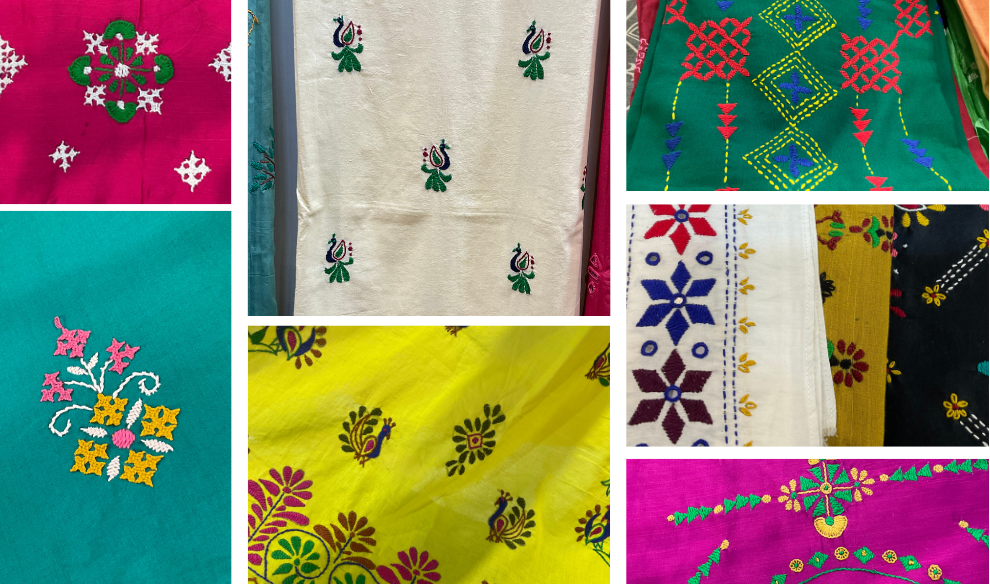Kutch Embroidery
Embroidery

History
Kutch embroidery traces its roots to the Kutch region of Gujarat and dates back several centuries. Originating among nomadic pastoral communities like the Rabari, Ahir, and Mutwa, it began as a form of self-expression. Over time, it became an essential dowry tradition, showcasing a woman’s creativity, skill, and cultural identity.
Raw Materials and Tools
Kutch embroidery primarily uses cotton or silk fabric as the base. Bright threads made of cotton, wool, or silk are commonly used, along with decorative elements like mirrors and beads. Basic tools include embroidery needles, scissors, and embroidery frames. These materials collectively bring out the vibrancy and texture of the intricate designs.
Process
The process begins with tracing or drawing motifs on the fabric. Artisans then stitch using traditional techniques, often incorporating small mirrors and beads. It is a time-intensive and meticulous craft requiring precision. Each motif is carefully embroidered by hand, demonstrating patience and creativity passed down through generations of skilled artisans.
Design and Color
Kutch embroidery is known for its bold motifs and intricate patterns inspired by daily life, mythology, and nature. Rabari embroidery, in particular, features animals, flowers, and geometric shapes. Dominant colors include red, black, yellow, and white, though contemporary artisans also experiment with modern color palettes for a fresh aesthetic.
Product Range
The embroidery adorns a wide range of products, including traditional garments like ghagras, cholis, and dupattas. It is also used in home décor items such as cushion covers, wall hangings, and table runners. Contemporary adaptations feature handbags, clutches, and jackets, expanding its appeal in domestic and global markets.
Additional Information
